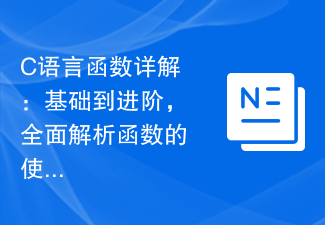// create a scene. it's an autorelease object Scene *scene = HelloWorld :: createScene (); // run director- runWithScene (scene); 那么接下来,我们看看这场戏到底内部是执行流程的
// create a scene. it's an autorelease object
Scene *scene = HelloWorld::createScene();
// run
director->runWithScene(scene);
那么接下来,我们看看这场戏到底内部是执行流程的啊。

OK,首先看看HelloWorldScene.h 到底有什么东西。
静态创建函数
static cocos2d::Scene* createScene();
初始化
virtualbool init();
菜单的一个回调函数
void menuCloseCallback(cocos2d::Ref* pSender);
这个。。。。看宏定义上面的注释说是创建一个特定的类
CREATE_FUNC(HelloWorld);
/**
* define a create function for a specific type, such as Layer
* @param \__TYPE__ class type to add create(), such as Layer
*/
#define CREATE_FUNC(__TYPE__) \
static __TYPE__* create() \
{ \
__TYPE__ *pRet = new __TYPE__(); \
if (pRet && pRet->init()) \
{ \
pRet->autorelease(); \
return pRet; \
} \
else \
{ \
delete pRet; \
pRet = NULL; \
return NULL; \
} \
}
看完后 ,哦,,,,
CREATE_FUNC(HelloWorld);
就是相当于
在 HelloWorldScene.h 的定义
static HelloWorld* create();
在 HelloWorldScene.m 的实现
HelloWorld* HelloWorld::create()
{
//创建一个 HelloWorld 对象
HelloWorld* helloWorld = new HellWorld();
//判断 HelloWorld 对象是否创建以及初始化成功
if (helloWorld && helloWorld->init())
{
//创建成功,初始化成功后,让其自动释放内存
helloWorld->autorelease();
//返回 HelloWorld 实例
return helloWorld;
} else {
//如果创建失败,将安全删除 HelloWorld 对象
delete helloWorld;
helloWorld = NULL;
return NULL;
}
}
好了,有宏的话,让我们剩下了不少代码的工作量啊。
接下来我们看看其他的吧
HelloWorldScene.cpp 的里面的函数的执行顺序是
先
Scene* HelloWorld::createScene();
再
bool HelloWorld::init();
Scene* HelloWorld::createScene()
{
// 'scene' is an autorelease object
auto scene = Scene::create();
// 'layer' is an autorelease object
auro layer = HelloWorld::create();
// add layer as a child to scene
scene->addChild(layer);
// return the scene
return scene;
}
可以写成
Scene* HelloWorld::createScene()
{
// 'scene' is an autorelease object
Scene* scene = Scene::create();
// 'layer' is an autorelease object
Layer* layer = HelloWorld::create();
// add layer as a child to scene
scene->addChild(layer);
// return the scene
return scene;
}
我们创建初始化一个场景后,然后又初始化一个层,将层放入场景里。
// on "init" you need to initialize your instance
bool HelloWorld::init()
{
//////////////////////////////
// 1. super init first
if ( !Layer::init() )
{
return false;
}
Size visibleSize = Director::getInstance()->getVisibleSize();
Point origin = Director::getInstance()->getVisibleOrigin();
/////////////////////////////
// 2. add a menu item with "X" image, which is clicked to quit the program
// you may modify it.
// add a "close" icon to exit the progress. it's an autorelease object
auto closeItem = MenuItemImage::create(
"CloseNormal.png",
"CloseSelected.png",
CC_CALLBACK_1(HelloWorld::menuCloseCallback, this));
closeItem->setPosition(Point(origin.x + visibleSize.width - closeItem->getContentSize().width/2 ,
origin.y + closeItem->getContentSize().height/2));
// create menu, it's an autorelease object
auto menu = Menu::create(closeItem, NULL);
menu->setPosition(Point::ZERO);
this->addChild(menu, 1);
/////////////////////////////
// 3. add your codes below...
// add a label shows "Hello World"
// create and initialize a label
auto label = LabelTTF::create("Hello World", "Arial", 24);
// position the label on the center of the screen
label->setPosition(Point(origin.x + visibleSize.width/2,
origin.y + visibleSize.height - label->getContentSize().height));
// add the label as a child to this layer
this->addChild(label, 1);
// add "HelloWorld" splash screen"
auto sprite = Sprite::create("HelloWorld.png");
// position the sprite on the center of the screen
sprite->setPosition(Point(visibleSize.width/2 + origin.x, visibleSize.height/2 + origin.y));
// add the sprite as a child to this layer
this->addChild(sprite, 0);
return true;
}
虽然这段很长,不过包含了很多要学习的知识。
从表面上看,这段代码都在讲初始化的那些事。
细心观察,这个和Objective-C 的 init 方法多类似啊,只是不是返回对象。
我们精简一下这段代码的框架
bool HelloWorld::init()
{
if ( !Layer::init() )
{
return false;
}
//初始化的内容
return true;
}
接下来看看里面进行的初始化的内容吧
向导演问了相关舞台的数据
Size visibleSize = Director::getInstance()->getVisibleSize(); Point origin = Director::getInstance()->getVisibleOrigin();
然后搞一个按钮出来,这个按钮可以触发指定的事件
// 2. add a menu item with "X" image, which is clicked to quit the program
// you may modify it.
// add a "close" icon to exit the progress. it's an autorelease object
auto closeItem = MenuItemImage::create(
"CloseNormal.png",
"CloseSelected.png",
CC_CALLBACK_1(HelloWorld::menuCloseCallback, this));
closeItem->setPosition(Point(origin.x + visibleSize.width - closeItem->getContentSize().width/2 ,
origin.y + closeItem->getContentSize().height/2));
// create menu, it's an autorelease object
auto menu = Menu::create(closeItem, NULL);
menu->setPosition(Point::ZERO);
this->addChild(menu, 1);
// 2. add a menu item with "X" image, which is clicked to quit the program
// you may modify it.
// add a "close" icon to exit the progress. it's an autorelease object
MenuItemImage* closeItem = MenuItemImage::create(
"CloseNormal.png",
"CloseSelected.png",
CC_CALLBACK_1(HelloWorld::menuCloseCallback, this));
closeItem->setPosition(Point(origin.x + visibleSize.width - closeItem->getContentSize().width/2 ,
origin.y + closeItem->getContentSize().height/2));
// create menu, it's an autorelease object
Menu* menu = Menu::create(closeItem, NULL);
menu->setPosition(Point::ZERO);
this->addChild(menu, 1);
MenuItemImage 类 创建一个对象,放入两张图片,和一个回调函数。
第一张图片是正常状态的,第二张是选择状态时的,回调函数,this 应该是目标和iOS 创建按钮很相似,而区别是没有触发事件的手势设置。
接下来就是设置 MenuItemImage 类 实例的位置
通过 MenuItemImage 类 实例 创建一个 Menu 类的实例。
设置坐标
最后,将这个Menu类的实例加入当前 Layer中
接下来就是创建一个Label 类了。
根据官方发布文档所描述。3.0将采用一个Label 类 来创建不同类型的Label,而且优化了很多性能,这些也是后话了。
// 3. add your codes below...
// add a label shows "Hello World"
// create and initialize a label
auto label = LabelTTF::create("Hello World", "Arial", 24);
// position the label on the center of the screen
label->setPosition(Point(origin.x + visibleSize.width/2,
origin.y + visibleSize.height - label->getContentSize().height));
// add the label as a child to this layer
this->addChild(label, 1);
创建一个LabelTTF类的实例,参数1是内容,参数2是字体,参数3是字体大小
然后就是设置 这个实例的位置
然后加入层
// add "HelloWorld" splash screen"
auto sprite = Sprite::create("HelloWorld.png");
// position the sprite on the center of the screen
sprite->setPosition(Point(visibleSize.width/2 + origin.x, visibleSize.height/2 + origin.y));
// add the sprite as a child to this layer
this->addChild(sprite, 0);我们接下来就是把加载一张图片,全屏显示
首先用精灵创建一个实例,参数是一张图片。
然后设置精灵的位置。
最后把精灵加入层里,
最后我们看看回调函数吧,当点击按钮时,就会触发这个回调函数,因为已经关联上了。
void HelloWorld::menuCloseCallback(Ref* pSender)
{
#if (CC_TARGET_PLATFORM == CC_PLATFORM_WP8) || (CC_TARGET_PLATFORM == CC_PLATFORM_WINRT)
MessageBox("You pressed the close button. Windows Store Apps do not implement a close button.","Alert");
return;
#endif
Director::getInstance()->end();
#if (CC_TARGET_PLATFORM == CC_PLATFORM_IOS)
exit(0);
#endif
}
这里实现的功能很简单,就是退出应用程序而已。
好了,就这样就结束了。接下来就是详情了。
表面上看,Cocos2d-X 真的不难~~~
呵呵
 PHP基础教程:从入门到精通Jun 18, 2023 am 09:43 AM
PHP基础教程:从入门到精通Jun 18, 2023 am 09:43 AMPHP是一种广泛使用的开源服务器端脚本语言,它可以处理Web开发中所有的任务。PHP在网页开发中的应用广泛,尤其是在动态数据处理上表现优异,因此被众多开发者喜爱和使用。在本篇文章中,我们将一步步地讲解PHP基础知识,帮助初学者从入门到精通。一、基本语法PHP是一种解释性语言,其代码类似于HTML、CSS和JavaScript。每个PHP语句都以分号;结束,注
 学习Go语言变量的基础知识Mar 22, 2024 pm 09:39 PM
学习Go语言变量的基础知识Mar 22, 2024 pm 09:39 PMGo语言是一种由Google开发的静态类型、编译型语言,其简洁、高效的特性受到了广泛的开发者关注和喜爱。在学习Go语言的过程中,熟练掌握变量的基础知识是至关重要的一步。本文将通过具体的代码示例来讲解Go语言中变量的定义、赋值、类型推断等基础知识,帮助读者更好地理解和掌握这些知识点。在Go语言中,定义一个变量可以使用关键字var,即var变量名变量类型的格
 PHP基础入门:如何使用echo函数输出文本内容Jul 30, 2023 pm 05:38 PM
PHP基础入门:如何使用echo函数输出文本内容Jul 30, 2023 pm 05:38 PMPHP基础入门:如何使用echo函数输出文本内容在PHP编程中,经常需要向网页上输出一些文本内容,这时就可以使用echo函数。本文将介绍如何使用echo函数输出文本内容,并提供一些示例代码。在开始之前,首先要确保你已经安装了PHP,并且配置了运行环境。如果还没有安装PHP,你可以在PHP官方网站(https://www.php.net)上下载最新的稳定版本。
 C语言函数详解:基础到进阶,全面解析函数的使用Feb 18, 2024 pm 02:25 PM
C语言函数详解:基础到进阶,全面解析函数的使用Feb 18, 2024 pm 02:25 PMC语言函数大全:从基础到进阶,详解函数的使用方法,需要具体代码示例简介:C语言是一种广泛使用的编程语言,其强大的功能和灵活性使它成为许多开发人员的首选。在C语言中,函数是一个重要的概念,它能够将一段代码组合成一个独立的模块,提高了代码的重用性和可维护性。本文将从基础开始介绍C语言函数的使用方法,并逐步进阶,帮助读者掌握函数编写的技巧。一、函数的定义与调用在C
 create语句能用来建立表结构并追加新的记录吗Jul 25, 2022 am 11:25 AM
create语句能用来建立表结构并追加新的记录吗Jul 25, 2022 am 11:25 AM不能。CREATE语句的功能是创建一个表结构,但不能追加新的记录,追加新的记录可以使用INSERT语句。CREATE语句可用于在数据库中创建新表,并规定数据列的属性和约束;但新建的表是一个空表,需要使用INSERT语句追加新的记录。INSERT语句用于向数据库已有的表中插入一行或者多行元组数据。
 PHP函数用法:从基础到进阶Jun 15, 2023 pm 11:11 PM
PHP函数用法:从基础到进阶Jun 15, 2023 pm 11:11 PMPHP是一种广泛使用的服务器端脚本语言,用于开发动态网站、Web应用程序和其他互联网服务。在开发PHP应用程序过程中,使用函数可以帮助简化代码、提高代码重用性和降低开发成本等。本文将介绍PHP函数的基础用法和进阶用法。一、PHP函数的基础用法1.定义函数在PHP中,使用function关键字来定义函数,例如:functiongreet($name){
 不要错过立即获取免费基础 C# 认证的机会来自MicrosoftSep 01, 2023 pm 12:45 PM
不要错过立即获取免费基础 C# 认证的机会来自MicrosoftSep 01, 2023 pm 12:45 PM召集所有C#开发人员!Microsoft和非营利组织freeCodeCamp宣布推出新的全球免费基础C#认证。该认证旨在帮助所有级别的开发人员学习C#的基础知识,C#是一种用于创建各种应用程序的流行编程语言,您可以在LinkedIn配置文件中显示它。该认证包括35小时的MicrosoftLearn培训课程,以及在freeCodeCamp上举办的80个问题的考试。本课程涵盖变量、数据类型、控制结构和面向对象编程等主题。“我们的基础C#认证正好提供了这一点–证明了您为掌握这种多功
 Linux可以零基础学习吗?需要学什么?Feb 19, 2024 pm 12:57 PM
Linux可以零基础学习吗?需要学什么?Feb 19, 2024 pm 12:57 PM想要从事IT行业,但是有不想要学习编程该选择哪门技术合适呢?当然是Linux运维了。Linux是市场上非常受欢迎的技术,应用范围广泛,就业前景好,受到了很多人的喜欢。那么问题来了,Linux运维零基础可以学习吗? 在服务器市场上,Linux系统因为稳定安全、免费开源和高效便捷等优点在市场占有率高达80%,由此可以看得出来Linux应用是非常广泛的。无论是现在还是未来,学习Linux都是非常不错的选择。至于零基础可以学习吗?我的答案是当然可以了。老男孩教育Linux面授班专门针对零基础人员设


热AI工具

Undresser.AI Undress
人工智能驱动的应用程序,用于创建逼真的裸体照片

AI Clothes Remover
用于从照片中去除衣服的在线人工智能工具。

Undress AI Tool
免费脱衣服图片

Clothoff.io
AI脱衣机

AI Hentai Generator
免费生成ai无尽的。

热门文章

热工具

SublimeText3 Mac版
神级代码编辑软件(SublimeText3)

适用于 Eclipse 的 SAP NetWeaver 服务器适配器
将Eclipse与SAP NetWeaver应用服务器集成。

Atom编辑器mac版下载
最流行的的开源编辑器

mPDF
mPDF是一个PHP库,可以从UTF-8编码的HTML生成PDF文件。原作者Ian Back编写mPDF以从他的网站上“即时”输出PDF文件,并处理不同的语言。与原始脚本如HTML2FPDF相比,它的速度较慢,并且在使用Unicode字体时生成的文件较大,但支持CSS样式等,并进行了大量增强。支持几乎所有语言,包括RTL(阿拉伯语和希伯来语)和CJK(中日韩)。支持嵌套的块级元素(如P、DIV),

SecLists
SecLists是最终安全测试人员的伙伴。它是一个包含各种类型列表的集合,这些列表在安全评估过程中经常使用,都在一个地方。SecLists通过方便地提供安全测试人员可能需要的所有列表,帮助提高安全测试的效率和生产力。列表类型包括用户名、密码、URL、模糊测试有效载荷、敏感数据模式、Web shell等等。测试人员只需将此存储库拉到新的测试机上,他就可以访问到所需的每种类型的列表。





